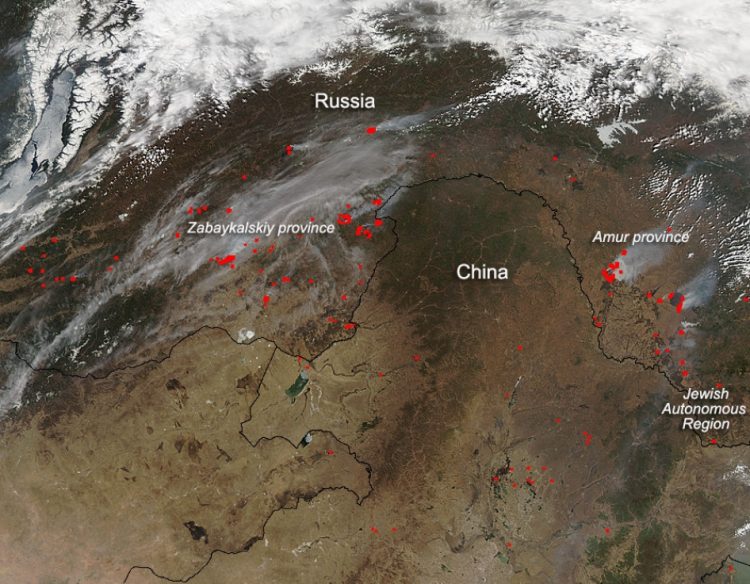Wildfire Outbreak in Far Eastern Russia

On Friday, 147 new fires began at 12,509 hectares, and 150 were extinguished at 5,437 hectares.
Emergency situation has been introduced in the regions with most complicated situations – in the Amur region, in the Maritime and Baikal territories.
This was according to the EMERCOM's (Emergency Control Ministry) spokesperson Alexander Drobyshevsky.
Satellites (such as Aqua and Terra) have located “1,587 thermal points, where 1,362 thermal point were confirmed later on. Over 800 specialized vehicles, 30 aircrafts and 3,247 people are involved in extinguishing of the wildfires.”
According to EMERCOM, 63 fires have not been put down, 42 of which are in the Primorsky region (not seen in this image), six in the Jewish Autonomous Region, seven in the Khabarovsk region (not seen in this image), eight in the Amur region. 21 out of the active fires have been localized.
NASA's fire imagery from April 23, 2014 showed the outbreak of fires in the Primorsky Region of Russia.
For more information on this developing situation, go to: http://voiceofrussia.com/news/2014_04_19/30-aircrafts-of-Russian-Emergency-Ministry-extinguish-wildfires-in-Far-East-Siberia-5759/
This natural-color satellite image was collected by the Moderate Resolution Imaging Spectroradiometer (MODIS) aboard the Aqua satellite on April 28, 2014. Actively burning areas, detected by MODIS’s thermal bands, are outlined in red.
NASA image courtesy Jeff Schmaltz, MODIS Rapid Response Team. Caption: NASA/Goddard, Lynn Jenner with information from the Voice of Russia.
Media Contact
All latest news from the category: Earth Sciences
Earth Sciences (also referred to as Geosciences), which deals with basic issues surrounding our planet, plays a vital role in the area of energy and raw materials supply.
Earth Sciences comprises subjects such as geology, geography, geological informatics, paleontology, mineralogy, petrography, crystallography, geophysics, geodesy, glaciology, cartography, photogrammetry, meteorology and seismology, early-warning systems, earthquake research and polar research.
Newest articles

Superradiant atoms could push the boundaries of how precisely time can be measured
Superradiant atoms can help us measure time more precisely than ever. In a new study, researchers from the University of Copenhagen present a new method for measuring the time interval,…

Ion thermoelectric conversion devices for near room temperature
The electrode sheet of the thermoelectric device consists of ionic hydrogel, which is sandwiched between the electrodes to form, and the Prussian blue on the electrode undergoes a redox reaction…

Zap Energy achieves 37-million-degree temperatures in a compact device
New publication reports record electron temperatures for a small-scale, sheared-flow-stabilized Z-pinch fusion device. In the nine decades since humans first produced fusion reactions, only a few fusion technologies have demonstrated…





















